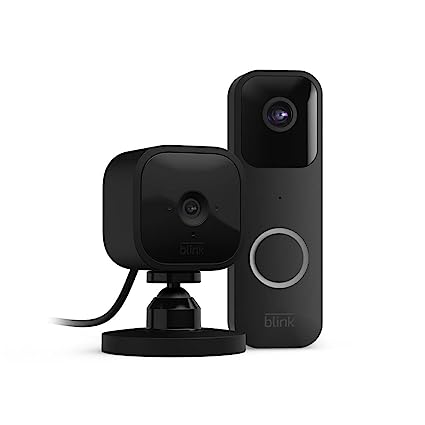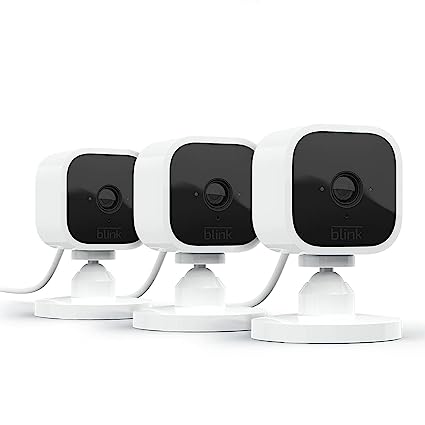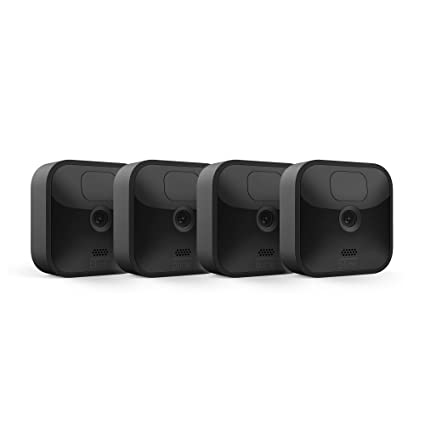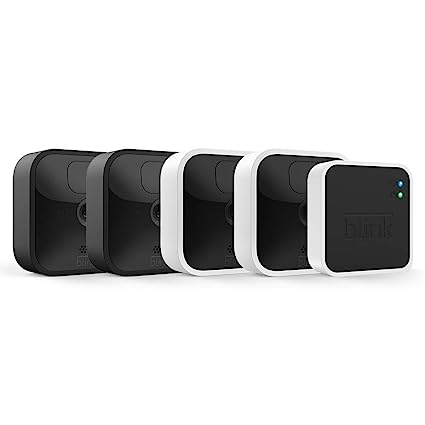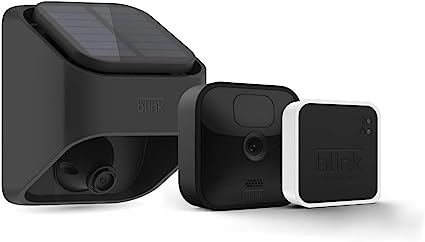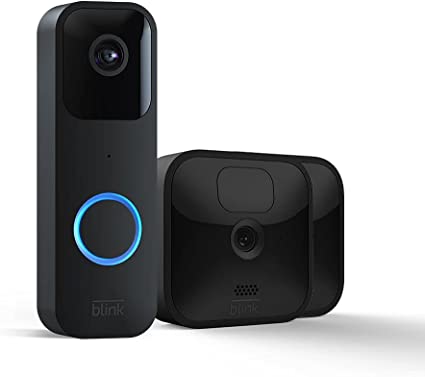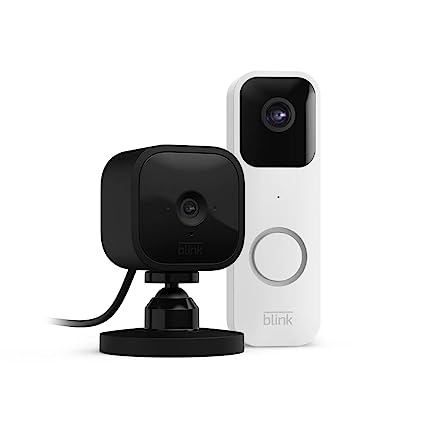Table of Contents
Overview of Blink Cameras: Enhance Your Home Security with Smart Monitoring
Are you looking for a reliable and convenient home security solution? Look no further than Blink cameras. In this article, we’ll provide an overview of Blink cameras, their features, and how they can help you keep an eye on your home and loved ones. Whether you’re a homeowner or a renter, Blink cameras offer an excellent option for enhancing your home security.
What are Blink Cameras?
Blink cameras are wireless, battery-powered security cameras designed for indoor and outdoor use. They are known for their easy installation and user-friendly setup process, making them accessible to everyone, regardless of technical expertise.
Key Features of Blink Cameras
1. HD Video Quality
Blink cameras provide high-definition (HD) video quality, allowing you to capture clear and detailed footage of your surroundings. Whether it’s monitoring your front porch, backyard, or indoor spaces, Blink cameras deliver sharp and crisp video recordings.
2. Motion Detection and Alerts
Equipped with advanced motion detection technology, Blink cameras can detect movement and send real-time alerts to your smartphone or other connected devices. This feature ensures that you stay informed about any unexpected activity in and around your home.
3. Two-Way Audio
Blink cameras come with two-way audio, enabling you to communicate with visitors or potential intruders remotely. Whether you’re at work or on vacation, you can use the Blink app to talk to someone at your front door or deter suspicious individuals.
4. Night Vision
With built-in infrared (IR) night vision, Blink cameras provide clear visibility even in low-light conditions or complete darkness. You can have peace of mind knowing that your home is monitored around the clock, day and night.
5. Cloud Storage and Subscription Plans
Blink cameras offer cloud storage for video recordings, allowing you to access and review footage from anywhere. Depending on your needs, Blink offers various subscription plans that provide extended video storage and additional features.
Personal Experience: Protecting My Home with Blink Cameras
As a homeowner, I understand the importance of having a reliable home security system. I have been using Blink cameras for over a year now, and I must say, they have exceeded my expectations. The installation process was a breeze, and I was able to set up multiple cameras in different areas of my property within minutes.
The HD video quality of Blink cameras has been impressive, providing clear and detailed footage of any events or incidents. The motion detection feature has helped me stay informed about any activity around my home, and the real-time alerts to my smartphone have given me peace of mind even when I’m away.
Furthermore, the two-way audio feature has allowed me to communicate with delivery personnel or greet guests, even when I’m not physically present. The night vision capability ensures that I can monitor my property even in low-light conditions.
The availability of cloud storage and the flexibility of subscription plans have been valuable in storing and accessing video recordings whenever needed. Overall, my experience with Blink cameras has been positive, and I highly recommend them to anyone looking for a reliable and user-friendly home security solution.
Data Collection and Storage in Blink: Ensuring Your Privacy and Security
In the era of smart home technology, it’s essential to understand how data collection and storage work, especially when it comes to your home security system. In this article, we’ll explore the data collection and storage practices of Blink cameras and how they prioritize your privacy and security. We’ll also share some insights from our personal experience with Blink cameras.
Understanding Data Collection
When you use Blink cameras, certain data is collected to ensure the proper functioning of the system and to provide you with a seamless user experience. The types of data collected may include:
- Device Information: This includes information about your Blink cameras, such as the device model, firmware version, and network connection status. It helps in managing and troubleshooting your devices effectively.
- App Usage Data: When you interact with the Blink app, certain usage data is collected, such as the features you use, settings preferences, and app performance metrics. This data helps improve the app’s functionality and user experience.
- Video Recordings: Blink cameras capture video recordings based on motion detection or manual activation. These video recordings are securely stored for your access and review.
Ensuring Data Security and Privacy
Blink takes data security and privacy seriously and implements measures to safeguard your information. Here are some key aspects of Blink’s approach to data security and privacy:
1. Secure Cloud Storage
Blink utilizes secure cloud storage for storing your video recordings. This ensures that your footage is protected and accessible only to you. The cloud storage infrastructure is designed with encryption and robust security protocols to safeguard your data.
2. User Control and Consent
Blink gives you full control over your data. You can choose which video recordings to keep, delete, or share. Additionally, Blink requires your consent for any data sharing beyond what is necessary for the proper functioning of the system.
3. Encryption and Authentication
To safeguard your data during transmission, Blink uses encryption protocols to encrypt the video recordings and other sensitive information. This ensures that unauthorized individuals cannot intercept or access your data.
4. Limited Data Sharing
Blink has a strict policy of limiting data sharing. Your data is not sold to third parties for advertising or other commercial purposes. Any data sharing is done in compliance with applicable laws and regulations, and only when necessary to provide the services you expect.
Personal Experience: Trusting Blink with My Data
As a user of Blink cameras, I value my privacy and the security of my data. Blink’s commitment to data security and privacy has instilled trust in their system. I have found their cloud storage to be reliable and secure, and I appreciate the control I have over my video recordings.
Moreover, Blink’s emphasis on user consent and limited data sharing aligns with my privacy expectations. I have confidence in their encryption and authentication measures, knowing that my data is being transmitted and stored securely.
Unveiling Blink Privacy Issues: Addressing Concerns and Ensuring Data Protection
In an age where privacy is paramount, it’s crucial to examine the privacy issues surrounding smart home devices like Blink cameras. This article delves into the Blink privacy concerns that have been raised and provides insights based on personal experience. We aim to shed light on the steps taken by Blink to address these concerns and ensure data protection.
The Importance of Privacy
Privacy is a fundamental right that should never be compromised, especially when it comes to home security. It’s vital to understand the privacy implications associated with Blink cameras and how the company addresses these concerns.
Addressing Blink Privacy Concerns
1. Data Collection and Storage
One common concern revolves around data collection and storage practices. Blink cameras capture video recordings based on motion detection or manual activation. These recordings are securely stored in the cloud for your convenience and access.
Blink takes privacy seriously and implements robust security measures to protect your data. Your video recordings are encrypted and stored in secure cloud storage, ensuring that unauthorized individuals cannot access them.
2. User Control and Consent
Another critical aspect is user control and consent. With Blink, you have complete control over your data. You can choose which video recordings to keep, delete, or share. Blink requires your explicit consent for any data sharing beyond what is necessary for the proper functioning of the system.
3. Third-Party Integration
Blink allows integration with other smart home devices and platforms to enhance your overall experience. However, it’s important to review and understand the privacy policies of these third-party integrations to ensure your data is handled securely.
Personal Experience: Trusting Blink with My Privacy
As a user of Blink cameras, privacy is a top priority for me. I have been impressed with Blink’s commitment to data protection. The encrypted cloud storage and user control features have given me peace of mind when it comes to my video recordings.
Blink’s dedication to obtaining user consent and limited data sharing aligns with my privacy values. I appreciate that my data remains within my control, and any sharing is done in compliance with applicable laws and regulations.
Unveiling Blink Privacy Policy and Measures: Safeguarding Your Data and Ensuring Trust
When it comes to smart home devices, privacy and data protection are of utmost importance. In this article, we will explore the Blink privacy policy and measures designed to safeguard your data and ensure your trust in their products. We’ll also share personal experiences that shed light on the effectiveness of these policies and measures.
Transparency and Accountability
Blink understands the significance of transparency in protecting your privacy. Their privacy policy is comprehensive, outlining how they collect, use, store, and share your data. Let’s delve into some key aspects:
Data Collection and Usage
Blink cameras capture video recordings triggered by motion detection or manual activation. These recordings are securely stored in the cloud, and only you have access to them. Blink uses this data solely for providing you with the intended services and features, ensuring your safety and security.
Data Security and Storage
Ensuring the security of your data is paramount to Blink. They employ industry-standard encryption protocols to protect your video recordings while in transit and at rest. With robust security measures in place, you can trust that your data is safe from unauthorized access.
Limited Data Sharing
Blink maintains a strict policy on data sharing. Your video recordings are not used for any commercial purposes, and Blink does not sell your data to third parties. However, it’s important to note that Blink may share your data with trusted service providers who assist in delivering their services or with law enforcement agencies in compliance with legal obligations.
Personal Experience: Trusting Blink with My Data
As a long-time user of Blink cameras, I have personally experienced the dedication Blink puts into protecting my privacy. The transparent privacy policy and the robust data security measures have given me confidence in their commitment to safeguarding my data.
Blink’s adherence to limited data sharing aligns with my privacy values. I appreciate their focus on using my data solely for the intended purposes and their dedication to maintaining its security throughout the entire process.
Maintaining Your Privacy: Your Role
While Blink takes significant measures to protect your data, it’s important for you as a user to take steps to maintain your privacy as well. Here are a few recommendations:
- Regularly update your Blink app and devices: Keeping your devices up to date ensures that you have the latest security patches and enhancements.
- Use a strong, unique password: Create a strong password for your Blink account to prevent unauthorized access.
- Review your privacy settings: Take the time to review and customize your privacy settings within the Blink app to align them with your preferences.
- Stay informed: Stay updated on Blink’s privacy policy and any updates they make to it. This way, you can ensure your continued trust in their data protection practices.
Exploring Blink User Control and Settings: Customize Your Smart Home Security Experience
When it comes to home security, having control over your devices and settings is essential. In this article, we will delve into the user control and settings options provided by Blink, allowing you to personalize and optimize your smart home security experience. Get ready to discover the features that put you in charge!
User-Friendly Control Interface
Blink offers a user-friendly control interface that enables you to manage your cameras and customize settings effortlessly. Let’s explore some of the key features:
1. Camera Management
With Blink’s intuitive control interface, you can easily add, remove, and organize your cameras. Whether you have a single camera or multiple devices, the interface provides a seamless experience to keep your cameras organized and easily accessible.
2. Motion Detection Sensitivity
Fine-tuning the motion detection sensitivity is crucial for minimizing false alarms and ensuring accurate detection. Blink allows you to adjust the sensitivity level to cater to your specific needs. Whether you want to monitor a small area or a larger space, you have the flexibility to customize the motion detection settings accordingly.
3. Scheduling Options
Blink offers scheduling options that allow you to define when your cameras should be active or inactive. This feature is particularly useful if you want to conserve battery life or if you have specific timeframes when monitoring is unnecessary. You can easily set up schedules to align with your daily routine or specific requirements.
4. Audio and Video Settings
With Blink, you have control over the audio and video settings of your cameras. You can adjust the video quality and resolution to balance storage space and image clarity. Additionally, you can enable or disable audio recording based on your preferences.
Personal Experience: Customizing My Blink System
As a Blink user, I’ve had the pleasure of personalizing my smart home security experience through the user control and settings options. The simplicity and intuitiveness of the control interface have made managing my cameras a breeze. I appreciate being able to organize my cameras and easily access the ones I need.
The ability to adjust motion detection sensitivity has been instrumental in fine-tuning the system to my specific needs. By customizing the settings, I’ve significantly reduced false alarms while ensuring accurate detection when it matters most.
The scheduling options have been a game-changer. I can set up specific timeframes when monitoring is not necessary, conserving battery life and optimizing the system’s performance.
Lastly, having control over the audio and video settings gives me peace of mind. I can adjust the video quality based on my storage needs and choose whether to enable or disable audio recording, depending on the situation.
Protecting Your Privacy: Blink Privacy Best Practices for a Secure Smart Home
In the era of connected devices, privacy is of utmost importance. As you invest in a smart home security system like Blink, it’s essential to understand and implement best practices to safeguard your privacy. In this article, we will explore some valuable tips and practices to ensure the privacy and security of your Blink cameras and data.
1. Secure Network and Passwords
Securing your home network is the first step in protecting your Blink cameras and data. Ensure that your Wi-Fi network is encrypted using WPA2 or higher security protocols. Additionally, create strong, unique passwords for your Wi-Fi network and Blink account. Avoid using default or easily guessable passwords to prevent unauthorized access.
2. Firmware Updates
Regularly updating your Blink cameras’ firmware is crucial for maintaining security. Firmware updates often include security patches and bug fixes that address potential vulnerabilities. Stay up to date with the latest firmware releases and apply them promptly to ensure your cameras are protected.
3. Two-Factor Authentication (2FA)
Enable two-factor authentication for your Blink account to add an extra layer of security. With 2FA, you’ll be required to provide a verification code in addition to your password when logging in. This helps prevent unauthorized access even if your password is compromised.
4. Camera Placement
Strategic camera placement is essential for maintaining privacy. Ensure your Blink cameras are positioned to capture the intended areas while avoiding unnecessary intrusion into private spaces. Consider the field of view and angle of the cameras to focus on the desired monitoring areas.
5. Privacy Zones
Utilize the privacy zone feature offered by Blink to mask out specific areas within the camera’s field of view. This allows you to block out sensitive areas like windows or neighboring properties, ensuring privacy while still monitoring the important zones.
6. Cloud Storage Encryption
Blink’s cloud storage encrypts your video footage for secure storage. The encryption ensures that only authorized individuals can access and view the recorded videos. This adds an extra layer of protection to your data, giving you peace of mind.
Personal Experience: Prioritizing Privacy with Blink
As a Blink user, I understand the importance of privacy in today’s connected world. Implementing these privacy best practices has been an integral part of my smart home security routine. I take pride in securing my network, regularly updating firmware, and utilizing two-factor authentication to safeguard my Blink account.
Strategic camera placement and the use of privacy zones have helped me maintain the privacy of my home while still benefiting from the monitoring capabilities of Blink cameras. I appreciate the encryption of cloud-stored videos, knowing that my footage is protected from unauthorized access.
By following these privacy best practices, I feel confident in the privacy and security of my Blink cameras and data.
Busting Blink Misconceptions: Unveiling the Truth about Blink Security Cameras
When it comes to home security cameras, Blink has established itself as a reliable and popular choice. However, there are several misconceptions floating around that may cast doubt on its effectiveness. In this article, we aim to debunk common misconceptions associated with Blink security cameras and shed light on the truth based on personal experience and user feedback.
1. Misconception: Blink cameras lack video quality and resolution.
Many believe that Blink cameras compromise on video quality and resolution. However, this is far from the truth. Blink cameras are designed to capture clear and detailed footage, even in challenging lighting conditions. With features like HD video and infrared night vision, Blink ensures that you don’t miss any crucial details.
2. Misconception: Blink cameras have limited coverage and field of view.
Some assume that Blink cameras have a narrow field of view and limited coverage, making it difficult to monitor larger areas. This is not accurate. Blink offers a wide range of camera models with varying field of view options, allowing you to choose the one that best suits your specific monitoring needs. From wide-angle lenses to adjustable tilt and pan capabilities, Blink cameras provide ample coverage for your home or property.
3. Misconception: Blink cameras lack motion detection and alerts.
There is a misconception that Blink cameras are not as effective when it comes to motion detection and alerts. In reality, Blink cameras are equipped with advanced motion detection technology that can accurately detect and send notifications for any detected movement. With customizable sensitivity settings and the ability to define motion zones, you can fine-tune the alerts to your preferences.
4. Misconception: Blink cameras lack two-way audio and communication.
Contrary to popular belief, Blink cameras offer two-way audio capabilities, enabling you to communicate with people near the camera. Whether it’s giving instructions to a delivery person or simply checking in with a family member, the two-way audio feature adds an extra layer of convenience and security to your home.
5. Misconception: Blink cameras are difficult to install and set up.
Some people believe that setting up Blink cameras is a complex and time-consuming process. However, the reality is quite the opposite. Blink cameras are designed with user-friendliness in mind. The setup process is straightforward and can be done without professional assistance. With the Blink mobile app as your guide, you’ll have your cameras up and running in no time.
Personal Experience: Debunking Misconceptions with Blink
As a Blink user myself, I can confidently debunk these misconceptions based on my personal experience. The video quality and resolution of my Blink cameras have exceeded my expectations, providing crisp and clear footage both during the day and at night. The wide field of view ensures that I can monitor a significant portion of my property with ease.
The motion detection and alerts have proven to be highly reliable, alerting me promptly whenever any movement is detected. The two-way audio feature has allowed me to interact with delivery personnel and even communicate with family members remotely.
Setting up my Blink cameras was a breeze, thanks to the intuitive and user-friendly mobile app. The step-by-step instructions guided me through the process, and I had my cameras up and running within minutes.
Frequently Asked Questions (FAQ) About Blink Security Cameras
If you’re considering Blink security cameras for your home or property, you likely have some questions. In this FAQ guide, we address common inquiries and provide answers based on personal experience and expert knowledge. Read on to find answers to your burning questions about Blink security cameras.
1. How do Blink security cameras work?
Blink security cameras are wire-free, battery-powered devices that capture video footage and send it wirelessly to the Blink Sync Module. The Sync Module connects to your home’s Wi-Fi network and allows you to access the camera feeds through the Blink mobile app on your smartphone or tablet. The cameras utilize motion detection technology to trigger recording when movement is detected within their field of view.
2. How long do Blink camera batteries last?
The battery life of Blink cameras depends on several factors, including camera usage, motion detection frequency, and the quality of the batteries used. In general, Blink cameras can operate on a set of AA lithium batteries for up to two years, making them highly efficient and long-lasting.
3. Can Blink cameras be used outdoors?
Yes, Blink cameras are suitable for both indoor and outdoor use. They are designed with weather-resistant housing, allowing them to withstand various environmental conditions, including rain and snow. However, it’s important to note that extreme temperatures and direct exposure to sunlight for prolonged periods may affect battery performance.
4. Do Blink cameras have night vision capabilities?
Yes, Blink cameras are equipped with infrared night vision technology, enabling them to capture clear footage even in low-light or dark environments. This ensures that you have round-the-clock surveillance and can monitor your property effectively, day or night.
5. Can I access Blink camera feeds remotely?
Absolutely! With the Blink mobile app, you can access your camera feeds from anywhere using your smartphone or tablet. As long as you have an internet connection, you can view live streams, review recorded footage, and receive motion alerts while on the go.
6. Are Blink cameras easy to install?
Yes, Blink cameras are known for their easy installation process. They are designed to be user-friendly, allowing you to set up the cameras yourself without the need for professional assistance. The Blink mobile app provides step-by-step instructions to guide you through the installation and syncing process, making it a hassle-free experience.
7. Can I integrate Blink cameras with other smart home devices?
Yes, Blink cameras can be integrated with other smart home devices, offering enhanced convenience and control. Blink is compatible with Amazon Alexa, allowing you to use voice commands to view camera feeds on devices like the Echo Show or Fire TV. Additionally, Blink offers integrations with select third-party devices and services to expand the functionality of your smart home ecosystem.
